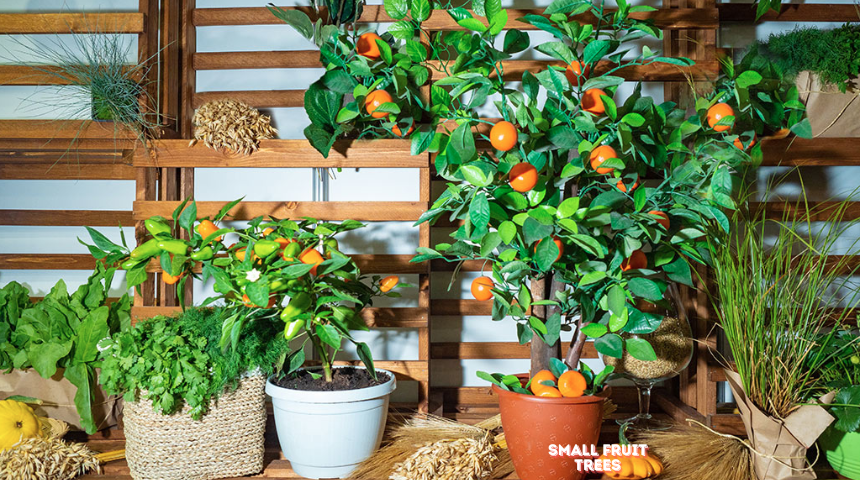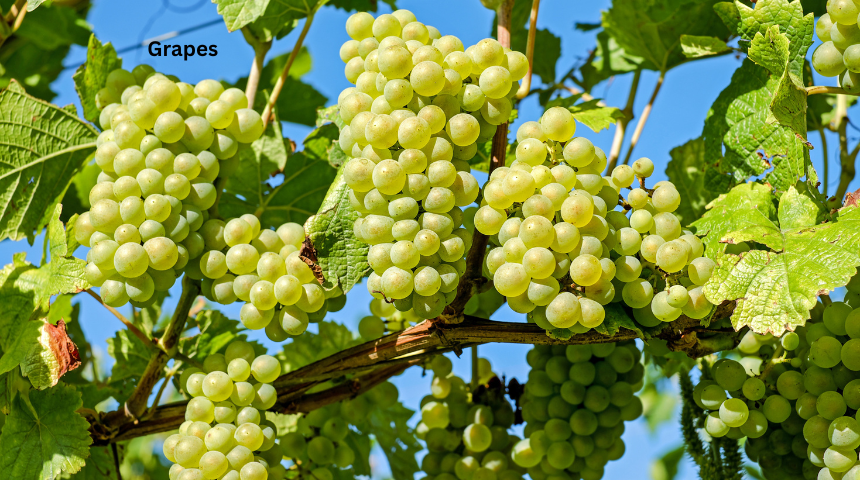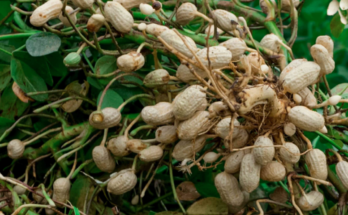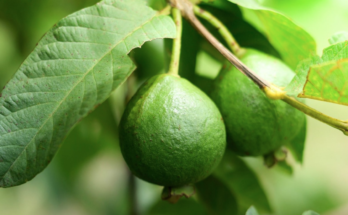Growing small fruit trees can be a rewarding experience that brings both beauty and bountiful harvests to your garden. You’re in the right place if you’re interested in learning how to grow and care for small fruit trees.
As someone who has spent years cultivating these charming trees, I know that even a small garden can become a fruit paradise with the right approach.
Small fruit trees are space-efficient and offer a chance to enjoy fresh, homegrown produce. In this guide, I’ll share practical tips and personal insights to help you succeed in nurturing your tiny orchard.
From choosing the right varieties to understanding their specific needs, you’ll find that growing small fruit trees can be both manageable and enjoyable. Let’s dive into the essentials of tree care and watch your garden flourish!
How To Grow And Care for Small Fruit Trees?
To grow and care for small fruit trees, select the right variety for your space and climate. Plant your tree in well-draining soil with plenty of sunlight. Water it regularly, but be careful not to overwater.
Prune your tree annually to encourage healthy growth and better fruit production. Use mulch to retain moisture and suppress weeds. Fertilize the tree according to its needs, usually in early spring.
Watch for pests and diseases, and take action if needed. Regularly check the tree’s health and adjust care as required. Following these steps will help your small fruit trees thrive and produce delicious fruit.
Which fruit tree is best for a small garden?
When it comes to choosing a fruit tree for a small garden, dwarf and compact varieties are your best bet. Trees like the dwarf apple and miniature peach are perfect for limited spaces, as they offer full-sized fruit on a smaller scale.
Dwarf citrus trees, such as lemon or lime, are also excellent choices, thriving in pots and adding a touch of greenery to any space.
These trees not only fit well into smaller gardens but are also easier to manage and harvest, making them ideal for urban gardeners or anyone with limited space.
By selecting one of these compact fruit trees, you can enjoy homegrown fruit without needing a sprawling garden.

Types Of Dwarf Fruit Trees
Bonanza Patio Peach Tree: This compact peach tree is perfect for gardeners with limited space, reaching a manageable height of 4-5 feet and spreading about the same width.
Ideal for container gardening, it offers the benefit of fresh, juicy peaches in a small footprint. Its dwarf size doesn’t compromise on fruit production, making it a delightful choice for patios and small yards.
Fignomenal Fig: The Fignomenal Fig is a small yet productive tree that grows to about 3-4 feet in height and spread. Its compact size makes it an excellent choice for pots and small garden spaces.
Despite its size, it produces delicious, sweet figs, adding a touch of elegance and taste to any small garden.
Improved Meyer Lemon Tree: Known for its flavorful lemons, the Improved Meyer Lemon Tree grows between 4-6 feet tall and 3-5 feet wide. It thrives in full sun and is well-suited for both indoor environments and patios.
This dwarf variety provides a steady supply of vibrant lemons, perfect for cooking or fresh lemonade.
Espalier Grafted Apple Tree: This tree is specially trained to grow flat against a wall or trellis, reaching a height of 6-8 feet and a width of 2-3 feet.
The espalier form is ideal for maximizing space in small gardens or urban settings, while still producing a bountiful harvest of crisp, delicious apples.
Carmine Jewel Dwarf Cherry Tree: The Carmine Jewel Dwarf Cherry Tree stands 4-6 feet tall and has a similar spread. It’s perfect for small gardens and containers, offering a productive yield of tart cherries.
Its compact size and high fruit production make it a favorite among small-space gardeners.
Dwarf European Olive Tree: This olive tree remains compact, growing to about 3-4 feet tall with a spread of 2-3 feet. Its small size makes it ideal for patios or small garden areas.

The Dwarf European Olive Tree not only adds a touch of Mediterranean flair but also produces small, flavorful olives.
Dwarf Pomegranate Tree: Reaching a height and spread of 3-4 feet, the Dwarf Pomegranate Tree is perfect for container gardening or small garden spaces.
It yields vibrant, ornamental fruits and adds a pop of color to your garden. Despite its size, it provides a satisfying harvest of tangy pomegranates.
Calamondin Orange Tree: The Calamondin Orange Tree is a compact citrus tree that grows 3-4 feet tall and wide.
Its small size makes it suitable for indoor settings or small outdoor spaces. It produces tart, aromatic oranges, perfect for adding a burst of citrus flavor to your dishes or drinks.
Choosing the Right Fruit Tree
When selecting a fruit tree, consider your climate, the available space, and the type of fruit you enjoy. Popular small fruit tree varieties include dwarf apple, cherry, and peach trees. These varieties are perfect for smaller spaces and can even be grown in large pots.
Factors to Consider:
- Climate: Ensure the tree is suitable for your region’s weather conditions.
- Space: Dwarf varieties are ideal for limited space.
- Type of Fruit: Choose fruits you love to eat and that grow well in your area.
Where to Purchase:
1. Local nurseries
2. Reputable online plant suppliers
Preparing the Planting Site
Preparing the right site for your fruit tree is crucial for its health and productivity. Ensure the soil is well-draining and rich in organic matter.
Ideal Soil Conditions:
- Loamy soil with good drainage
- Soil pH between 6.0 and 7.0
Sunlight and Drainage:
- Choose a location with full sun (at least 6 hours of direct sunlight daily).
- Ensure proper drainage to prevent root rot.
Testing and Amending Soil:
- Test the soil pH using a home test kit.
- Amend the soil with compost or organic matter to improve fertility.
Planting Your Fruit Tree
Planting your fruit tree correctly is vital for its long-term success. Follow these steps to ensure a healthy start.

Step-by-Step Planting Guide:
- Dig a Hole: Make it twice as wide and as deep as the root ball.
- Prepare the Roots: Soak the roots in water for a few hours before planting.
- Planting: Place the tree in the hole, ensuring the root collar is at ground level.
- Backfill: Fill the hole with soil, gently firming it around the roots.
- Water: Thoroughly water the tree to settle the soil.
Spacing Requirements:
- Maintain proper spacing based on the tree type to allow for growth and air circulation.
Watering and Fertilizing
Proper watering and fertilizing are key to the health of your fruit tree.
Watering Techniques:
- Water deeply and regularly, especially during dry periods.
- Avoid over-watering; ensure the soil is moist but not waterlogged.
Fertilizing Tips:
- Use a balanced fertilizer in early spring and midsummer.
- Consider organic options like compost or well-rotted manure.
Organic vs. Synthetic Fertilizers:
- Organic fertilizers improve soil structure and fertility over time.
- Synthetic fertilizers provide immediate nutrients but can affect soil health long-term.

Pruning and Training
Pruning and training your fruit tree helps maintain its shape, improve air circulation, and promote fruit production.
Importance of Pruning:
- Removes dead or diseased branches
- Encourages new growth
- Improves fruit quality
Pruning Techniques:
- Use sharp, clean tools.
- Prune in late winter or early spring before new growth starts.
- Remove any crossing branches and thin the canopy.
Training Trees:
- Train young trees to establish a strong structure.
- Use stakes or supports if necessary.
Pest and Disease Management
Protecting your fruit tree from pests and diseases is essential for healthy growth and abundant harvests.
Common Pests and Diseases:
- Aphids, scale insects, and mites
- Fungal infections like powdery mildew and rust
Control Methods:
- Natural: Introduce beneficial insects, use neem oil or insecticidal soap.
- Chemical: Use pesticides as a last resort and follow label instructions.
Preventive Measures:
- Keep the area around the tree clean and free of fallen fruit and leaves.
- Prune to improve air circulation and reduce disease risk.
Harvesting and Storing Fruit
Knowing when and how to harvest your fruit ensures you get the best flavor and longest storage life.
Signs of Readiness:
- Color change and firmness
- Ease of picking (fruit should come off with a gentle twist)
Best Practices for Picking:
- Harvest in the morning when temperatures are cooler.
- Handle fruit gently to avoid bruising.
Storing and Preserving:
- Store in a cool, dry place.
- Consider canning, drying, or freezing excess fruit.
Seasonal Care and Maintenance
Caring for your fruit tree varies with the seasons. Here’s a seasonal guide to ensure year-round health.
Spring:
- Apply fertilizer.
- Prune if not done in winter.
Summer:
- Water regularly.
- Monitor for pests and diseases.
Fall:
- Harvest fruit.
- Clean up fallen leaves and fruit.
Winter:
- Protect from frost with mulch.
- Prune if necessary.
What is the best peach tree for a small garden?
For a small garden, the Bonanza Patio Peach Tree stands out as the best choice. This dwarf variety is specifically bred to thrive in limited spaces, growing to just 4-5 feet in height and width.
Despite its compact size, it produces a generous crop of juicy, flavorful peaches. Its suitability for container gardening makes it perfect for small yards, patios, or even balconies, allowing you to enjoy fresh peaches without needing a large garden.
FAQ
What are the best fruit trees for small spaces?
Dwarf varieties like apple, cherry, and peach trees are ideal for small spaces.
How often should I water my small fruit tree?
Water deeply once a week, more often during dry periods.
What is the best time of year to plant a fruit tree?
Early spring or late fall, when the tree is dormant, is ideal.
How can I prevent pests from damaging my fruit tree?
Use natural methods like introducing beneficial insects and applying neem oil.
When is the right time to prune my fruit tree?
Late winter or early spring before new growth begins is the best time to prune.
Conclusion
Growing and caring for small fruit trees is a fulfilling endeavor that can provide delicious rewards. By choosing the right tree, preparing the site properly, and maintaining regular care, you can enjoy a bountiful harvest year after year.
Start your fruit tree journey today and share your experiences with us! Growing your fruit trees can be a delightful addition to your gardening activities, bringing you joy and fresh produce. Happy gardening!



